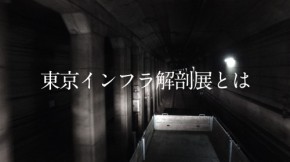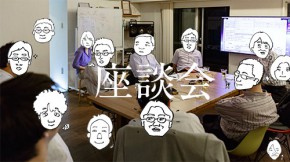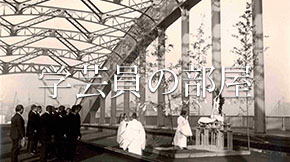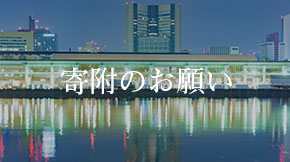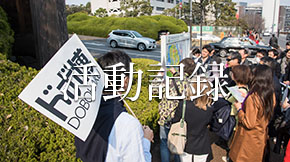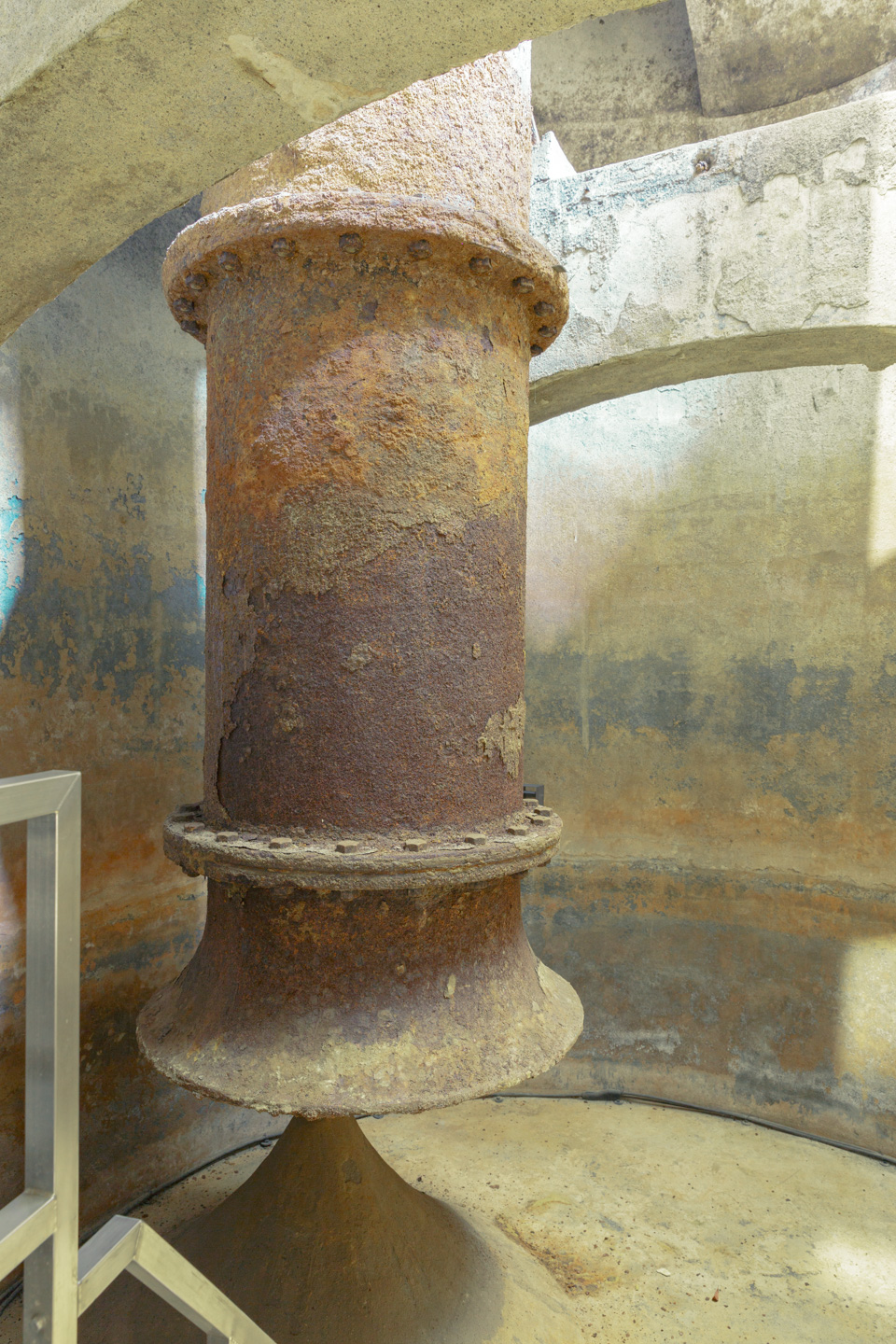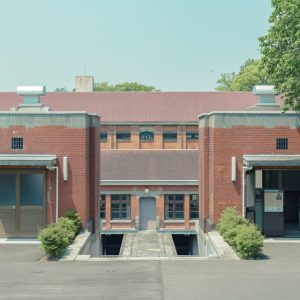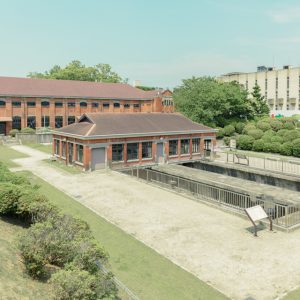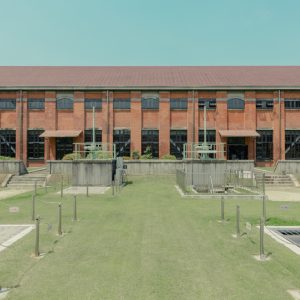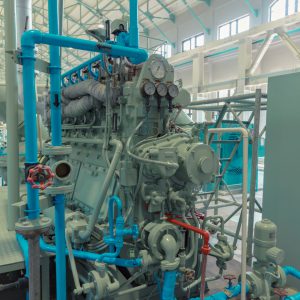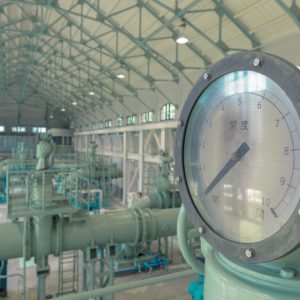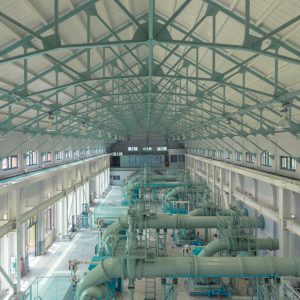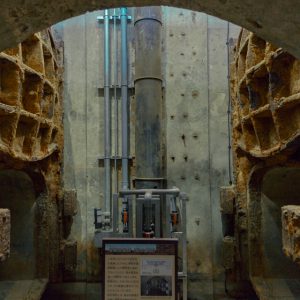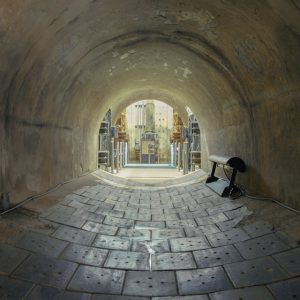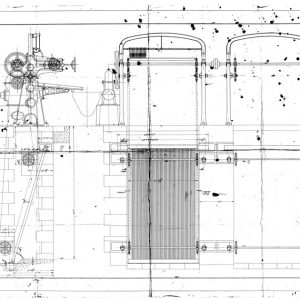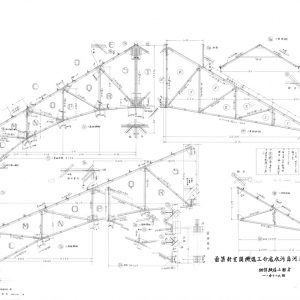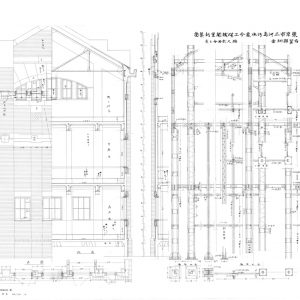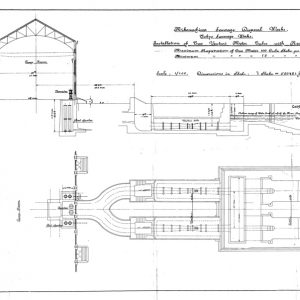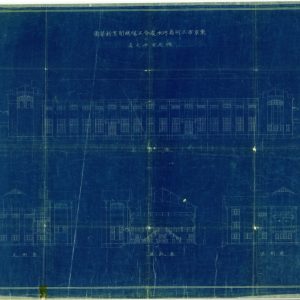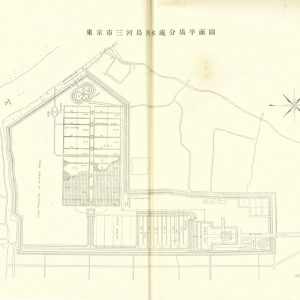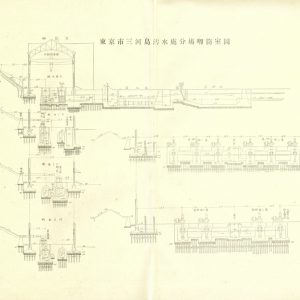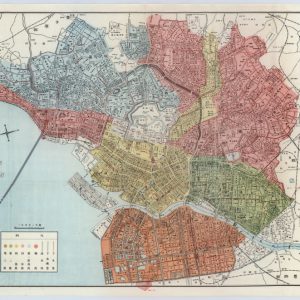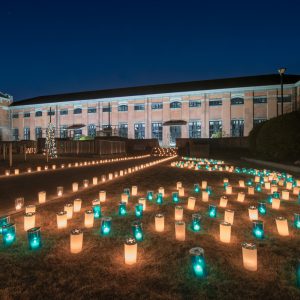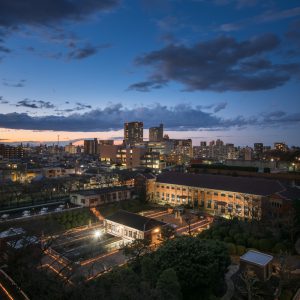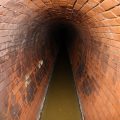The first sewage disposal site created in Japan. A modern sanitation facility in Tokyo, which was developed from the water supply system preferentially, was completed by the construction of this site. Therefore, not only “circulatory system” (water supply), but also “Kidney”, which is a key to “Urological system” (sewerage system), was arranged.
The structures are designed with reinforced concrete which Shinichi Yonemoto, chief engineer, could not use during the construction of Nihonbashi Bridge ten years ago due to cautious boss’s advice. The site consists of huge steel doors, arch shaped conduits, a large-scale building that houses mechanical equipment and large pumps to remove floating matter, etc. This completely new facility in Japan seemed to be a popular spot at that time where visitors come to Tokyo once visited, according to Wajiro Kon.
Here, the organic matter contained in the sewage was decomposed by bacteria and was discharged to the Sumida River. In other words, it artificially created the ecosystem at the bacterial level, and maintained the function of the healthy “kidney” by micropower.
Today, development of technology to efficiently recover phosphorus from sewage sludge and utilization of thermal energy of sewage are being studied. From the idea that just pursued rationalization of the straight flow from dirt to clean, to the idea of the sludge resourceization, that is, the construction of recycling system. Like the old sewer system in the Edo period, it is approaching modern technology for reconstructing the mutual relationship between nature and human being. (D.Kitagawa)
| Type | Sewage treatment plant | |
| Location | Arakawa-ku/Tokyo | |
| Structure | Reinforced concrete | |
| Scale | Site area 197 | 878 m² |
| Completion year | 1922 | |
| Manager | Tokyo | |
| Designer | Tokyo City | |
| Remarks | National Important Cultural Property |

